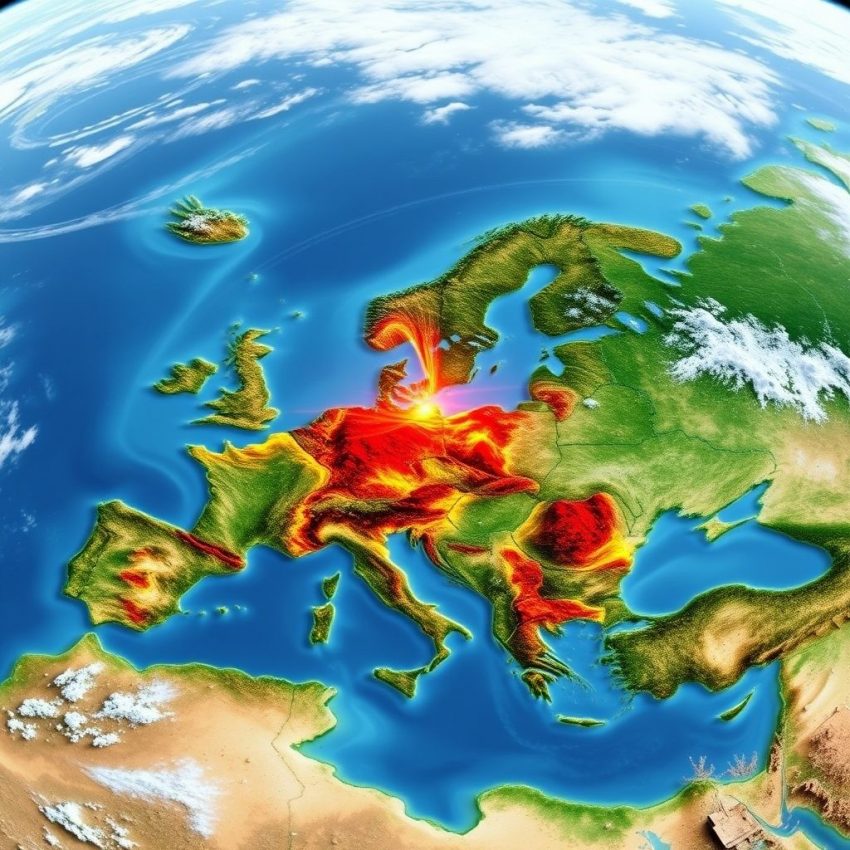Google's New AI: A Climate Change Satellite in the Cloud
Google's relentless pursuit of AI advancements has yielded another impressive feat: a novel AI model acting as a virtual satellite, meticulously tracking and analyzing climate change's impact. Forget clunky, expensive hardware orbiting the Earth; this AI is leveraging the power of data to provide unprecedented insights into our planet's changing climate.
This isn't just another climate model crunching numbers. Google's approach is unique. Instead of relying solely on traditional satellite imagery and ground-based sensors, this AI is trained on a massive dataset encompassing various sources:
- Satellite imagery: Traditional high-resolution images continue to be crucial, providing visual data on deforestation, glacier melt, and sea-ice extent.
- Weather data: Combining this with meteorological data allows the AI to correlate climate events with their underlying causes.
- Ground-based measurements: Incorporating data from weather stations, soil moisture sensors, and other ground-truth observations adds another layer of accuracy and validation.
What makes this AI truly groundbreaking is its ability to synthesize this diverse data into a cohesive, insightful picture. It can identify subtle patterns and trends that might be missed by analyzing individual datasets in isolation. Think of it as a sophisticated detective, piecing together clues from various sources to build a compelling case about the state of our planet.
So what can this AI actually do?
The possibilities are vast, but some key applications include:
- Predicting extreme weather events: By identifying patterns in historical data, the AI can improve the accuracy and lead time of weather forecasts, giving communities more time to prepare for hurricanes, droughts, and floods.
- Monitoring deforestation and habitat loss: The AI can track deforestation rates with greater precision, helping conservation efforts by identifying areas under threat and monitoring the effectiveness of interventions.
- Assessing the impact of climate change on agriculture: By analyzing soil moisture, temperature, and precipitation data, the AI can help farmers adapt to changing conditions and improve crop yields.
- Tracking sea-level rise and glacier melt: The AI provides a continuous monitoring system for these crucial indicators, allowing scientists to better understand the rate and impact of these phenomena.
The Implications are Far-Reaching
This AI isn't just a technological marvel; it's a powerful tool for combating climate change. By providing more accurate, timely, and comprehensive data, it empowers policymakers, scientists, and communities to make informed decisions and implement effective strategies for mitigation and adaptation.
The development of this AI represents a significant step forward in our ability to understand and address climate change. It demonstrates the transformative potential of AI to tackle some of humanity's most pressing challenges. While the technology continues to evolve, this "virtual satellite" offers a beacon of hope in our fight to protect our planet. The future of climate monitoring may well be powered by the ingenuity of artificial intelligence.
Don’t miss out on this exclusive deal, specially curated for our readers!
This page includes affiliate links. If you make a qualifying purchase through these links, I may earn a commission at no extra cost to you. For more details, please refer to the disclaimer page. disclaimer page.

